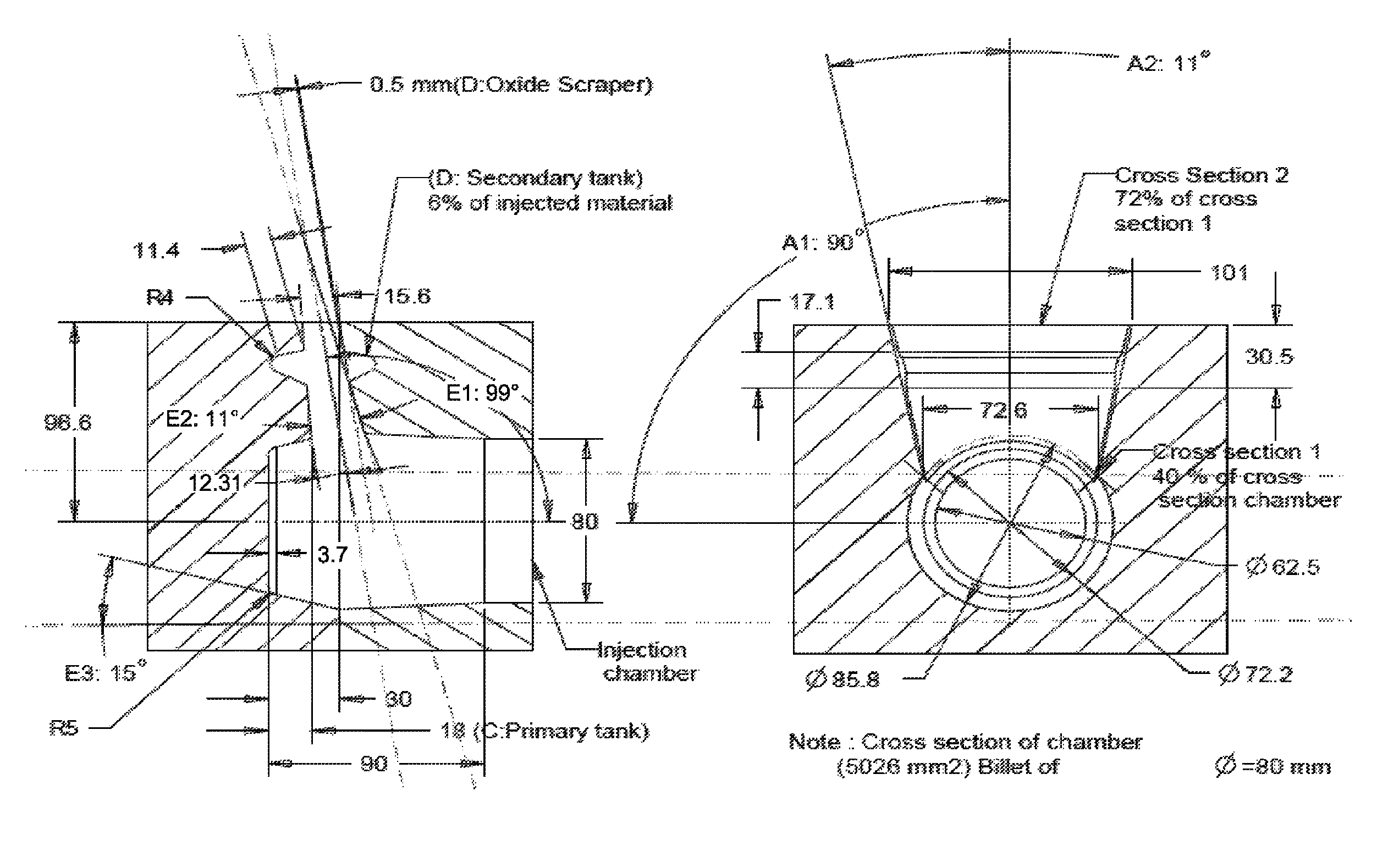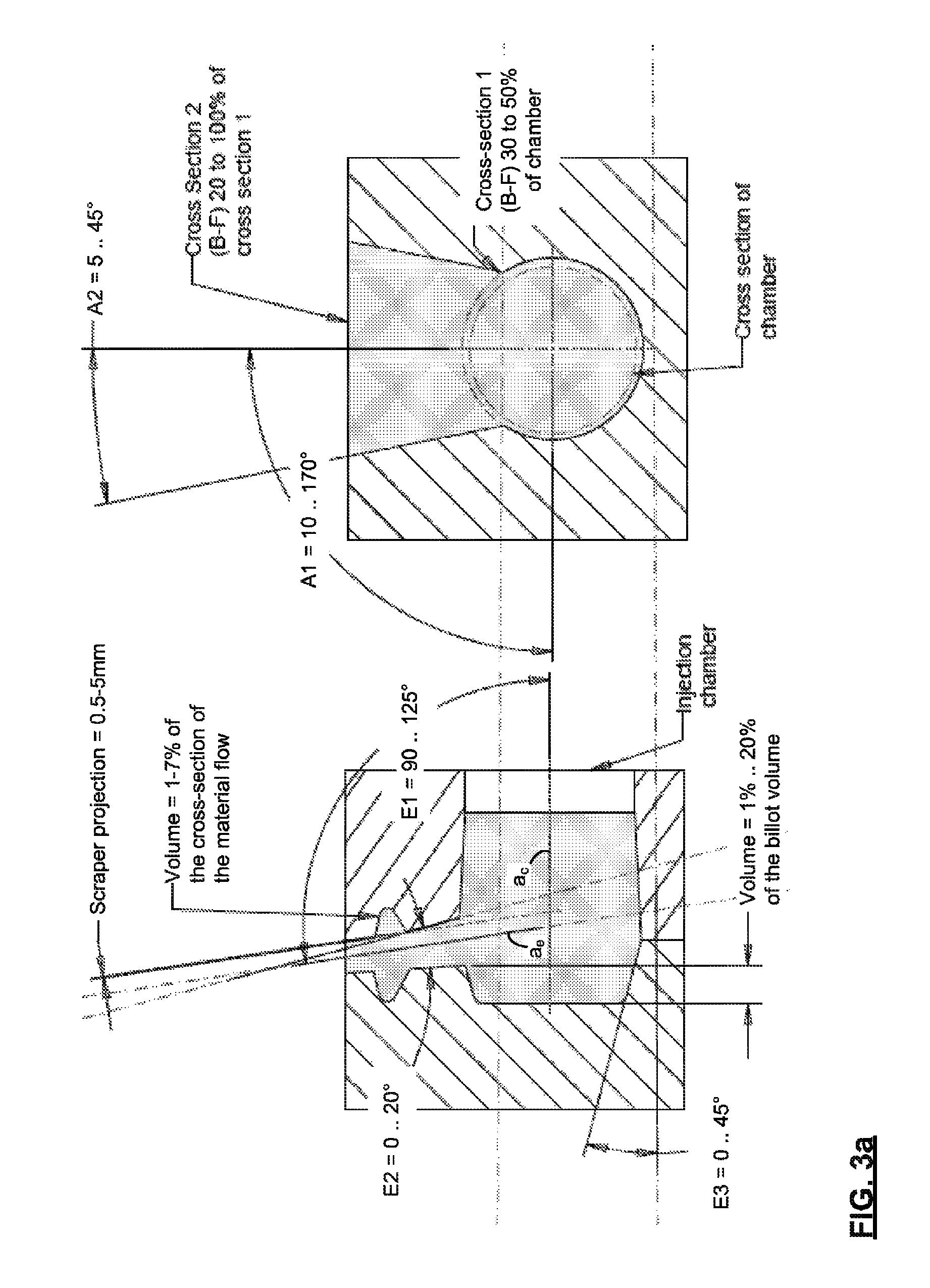Feeding system for semi-solid metal injection
a semi-solid metal injection and feeding system technology, applied in the field of die casting moulds, can solve the problems of significant differences between the rheological properties of semi-solid metal alloys and the molten metals used in conventional die casting, limited understanding of the semi-solid process, and difficulty in achieving the effect of reducing the length of the cross-section flow, facilitating more laminar flow, and efficiently communicating the for
- Summary
- Abstract
- Description
- Claims
- Application Information
AI Technical Summary
Benefits of technology
Problems solved by technology
Method used
Image
Examples
example 1
Simulations
[0043]A series of simulations were performed to examine design options for semi-solid injection. The objective of the simulations was to produce a design that retains the greatest flow laminarity, while trapping the greatest majority of inclusions. To this end, numerous simulations were performed with different flow parameters typical of semi-solid injection. The specific dimensions of the injection feed system chosen for analysis are shown in FIG. 3b. The principle simulation parameters were:
[0044]
Mould temperature300°C.Material (chamber) temperature585°C.Injection Speed (Piston)0.3m / sBillet dimensions80 mm diameter by 180 mm longMass of billet2.1-2.3kgMaterial compositionAL 357
The relevant rheological properties of AL 357 are well known in the art. The software Procast 2006 from ESI GROUP was use for all simulations. Specifically, these simulations were done by using isotherm flow solver module of the Procast software.
[0045]As a result of these simulations, a model havi...
example 2
Prototype Infection Feed System
[0049]A horizontal injection feed system was produced having the specifications shown in FIG. 3a. This injection feed system is shown in FIG. 5. The injection feed system was formed as a H13 steel insert for an existing cavity and piston set made by Buhler (530 ton). The insert was formed of 6 pieces: four retention blocks, and two mating pieces that form the upper and lower parts of the end of the chamber.
Characterization
[0050]FIGS. 6a,b are images of solidified parts from the feed system of FIG. 1. Metallographic analysis performed on a section of one of them (FIG. 6a) using an optical microscope shows the flow of inclusions up a slope caused by a ramp of skin in the annular skimming trough, and the advance of these inclusions into the concentric neck of the chamber. FIG. 6b is an X-ray image showing the inclusions within the neck, as well as the head and around the right angle bend.
[0051]A study of this horizontal injection feed system produced 200 ...
PUM
| Property | Measurement | Unit |
|---|---|---|
| angle | aaaaa | aaaaa |
| angle | aaaaa | aaaaa |
| angle | aaaaa | aaaaa |
Abstract
Description
Claims
Application Information
 Login to View More
Login to View More - R&D
- Intellectual Property
- Life Sciences
- Materials
- Tech Scout
- Unparalleled Data Quality
- Higher Quality Content
- 60% Fewer Hallucinations
Browse by: Latest US Patents, China's latest patents, Technical Efficacy Thesaurus, Application Domain, Technology Topic, Popular Technical Reports.
© 2025 PatSnap. All rights reserved.Legal|Privacy policy|Modern Slavery Act Transparency Statement|Sitemap|About US| Contact US: help@patsnap.com



